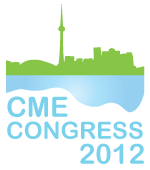John Fromson (MGH); Tristan Gorrindo (MGH); Elizabeth Goldfarb (MGH); Bettina Hoeppner (MGH); Robert Birnbaum (MGH)
Synopsis
Designing interprofessional education requires a comprehensive needs assessment to determine variations among diverse groups of learners. We employed a mixed methods model to ascertain the educational needs of distinct provider groups focusing on preparedness to detect and administer care for military deployment related stress.
Background
Service members (SMs) returning from the conflicts in Iraq and Afghanistan seek care for deploymentrelated stress from diverse professional sources, including clergy as well as traditional healthcare providers. As more SMs return home, it is critical that the professionals from whom they seek care are prepared to assist.
Methods
After registering for a live symposium, learners received an email inviting them to participate in a standardized online activity (clinical video vignette and questionnaire) and to volunteer for an on-site focus group. Video vignettes depicted a SM in conversation with a member of the registrant’s profession. Participants were asked an open-ended question about the presentation, designed to assess their ability to identify salient symptoms. Separately, they self-reported their level of preparedness to assist service members with deployment-related stress using Likert and open-ended formats. These needs assessments were enhanced using on-site focus groups, whose transcripts were analyzed for grounded theory emergent themes.
Results
Likert surveys indicated that providers felt more prepared than clergy. In their responses to the video vignette, however, 82% of clergy noted the SM’s suicidal ideation, compared to only 45% of providers. In the focus groups, clergy emphasized their need to feel prepared to create a safe space and understand the moral dilemmas of military service, while providers were concerned with assessment acumen and understanding different aspects of SMs’ needs. Thus, our mixed methods approach allowed us to identify otherwise unrecognized learning needs.
Conclusions
We present a systematic approach for identifying learning needs in diverse professional populations.
Funding Source
This research was funded by academic instiutional support.
Declaration
The authors do not report any conflicts of interest.





